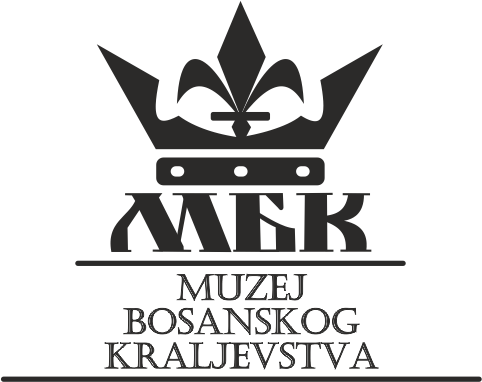Dragiša Vukčić (XIV century – after April 1, 1404) is the son of Duke Vukac Hrvatinić and the brother of the famous Bosnian nobleman Hrvoje Vukčić Hrvatinić. Several written sources provide evidence of this Bosnian nobleman’s activities from the end of the 14th century through the beginning of the 15th century, but our understanding of his life as a whole is limited. Together with his brothers, he supported Ladislaus of Naples in the fight for the Hungarian throne, who in turn issued him a charter on July 17, 1391, where he confirmed his possessions, the village of Zabić, whose location is not fully known, although the charter clearly specifies that it was in the domain of the town of Ključ, and the village of Srida in the county of Sana, which some people associate with the town of Srida, at the sub-town of the town of Glaž in the county of Glaž. Prince Dragiša Vukčić did control the county of Glaž a little later, and whether these data indicate that he had control of this area as early as 1391 remains unknown for now. It should be noted that the reliable location of the county of Glaž as well as the town of Glaž has also not been fully revealed, although relatively recent research indicates that they should be searched for in the lower course of the Vrbas river, along the very left bank of the river towards the confluence with the Sava. The mentioned possessions were already under the control of Prince Dragiša, they had previously been seized from the Hungarian crown, and the charter of Ladislaus of Naples only formalized the situation on the ground.
In the Chronicle of Pavle Pavlović, it is stated that Prince Dragiša Vukčić stayed in Zadar together with his wife in 1393. As stated by the chronicler from Zadar, the prince’s visit was motivated by his desire to worship the powers of St. Šimun. According to prevailing opinion, his stay in Zadar, which normally dates back to one year earlier, was part of negotiations led by his brother Vuk with the aim of handing over their town to Zadar. Namely, on May 6, 1392, it was Pavle Pavlović who was sent to Ban Vuk Vukčić in Klis, who was gathering an army there, and on September 3, Ban Vuk and his sub-ban Ivan Mišljenović were accepted as Zadar citizens and became town councilors. Prince Dragiša is probably referred to in Batalo’s Gospel, where it is pointed out that one of the brothers of Resa, the wife of the Tepčija Batalo Šantić, bore the title of “Prince of Bosnia”.
In historical sources, Prince Dragiša Vukčić is mentioned for the last time in the charter of Ladislaus of Naples issued on April 1, 1404. The text of the charter itself indicates that Prince Dragiša was the prefect (župan) of Glaž. After his death, he was succeeded by his son Ivaniš Dragišić.
Bibliography:
- Ančić, Mladen: Na rubu Zapada: tri stoljeća srednjovjekovne Bosne, Hrvatski institut za povijest – Dom i svijet, Zagreb, 2001, 204-206.
- Blagojević, Miloš: “Severna granica bosanske države u XIV veku” in: Bosna i Hercegovina od srednjeg veka do novijeg vremena (ed. Slavenko Terzić), Istorijski institut SANU-Pravoslavna reč Novi Sad, Beograd, 1995, 61-75.
- Ćošković, Pejo: “Hrvatinići (Horvatići, Stipančić Hrvatinić, Stipanići, Stjepanići), (velikaški rod)” in: Hrvatski biografski leksikon V (Gn-H), Leksikografski zavod Miroslav Krleža, Zagreb, 2002, 725-739.
- Fermendžin, Eusebius: Acta Bosnae potissimum ecclesiastica cum insertis editorum documentorum regestis ab anno 925 usque ad annum 1752, Academia scientarium et artium Slavorum meridionalium, Zagrabiae, 1892, 72.
- Klaić, Vjekoslav: Poviest Bosne do propasti kraljevstva, Zagreb, 1882, 21.
- Lovrenović, Dubravko: Na klizištu povijesti (Sveta kruna ugarska i Sveta kruna bosanska) 1387-1463, Synopsis, Zagreb-Sarajevo 2006, 39, 68, 70.
- Mrgić-Radojčić, Jelena: Donji Kraji. Krajina srednjovekovne Bosne, Filozofski fakultet u Beogradu-Filozofski fakultet u Banjaluci-Istorijski institut u Banjaluci, Beograd-Banja Luka, 2002, 75-77.
- Rački, Franjo: “Izvadci iz kralj. osrednjeg arkiva u Napulju za jugoslovjensku poviest”, Arkiv za povjestnicu jugoslavensku 7, Zagreb, 1863, 34-35.
- Smičiklas, Tadija: Codex diplomaticus regni Croatiae, Dalmatiae et Slavoniae, XVII, JAZU, Zagreb, 1981, 372-373.
- Šišić, Ferdo: Vojvoda Hrvoje Vukčić Hrvatinić i njegovo doba, MH, Zagreb, 1902, 5, 21-22, 83, 86.
- Šišić, Ferdo: “Ljetopis Pavla Pavlovića patricija zadarskoga”, Vjestnik Kr. hrvatsko–slavonsko-dalmatinskog zemaljskog arkiva 6, Zagreb, 1904, 17.
- Wenzel, Gusztáv: Magyar Diplomacziai Emlékek az Anjou Korbòl (Acta extera), III, Magyar Tudományos Akadémia, Budapest, 1876, 703-704.
Signature: Regest. Andegaven in tabular. neapolitano, vol 367, fol. 17, Državni arhiv u Napulju (Archivio di Stato Napoli), Napulj, Italija.
Signature source: Fermendžin, Eusebius: Acta Bosnae potissimum ecclesiastica cum insertis editorum documentorum regestis ab anno 925 usque ad annum 1752, Academia scientarium et artium Slavorum meridionalium, Zagrabiae, 1892, p. 72.
Signature: Regest. vol 362 (Ladisl. a. 1390. B.) fol. 65, Državni arhiv u Napulju (Archivio di Stato Napoli), Napulj, Italija
Signature source: Rački, Franjo: “Izvadci iz kralj. osrednjeg arkiva u Napulju za jugoslovjensku poviest”, Arkiv za povjestnicu jugoslavensku 7, Zagreb, 1863, p. 35.
